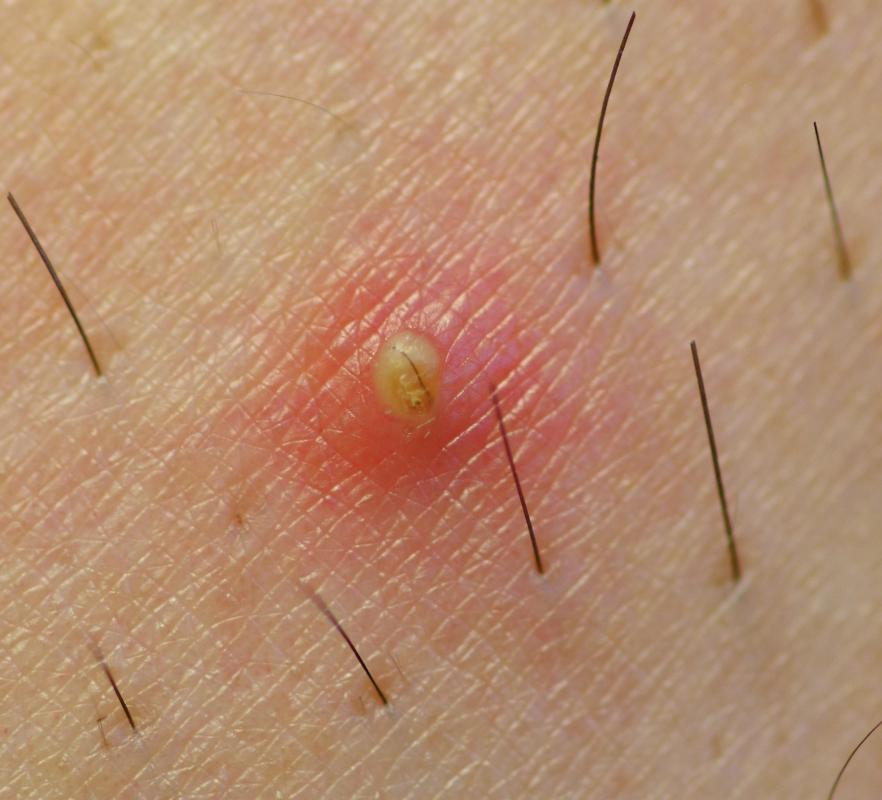At WiseGEEK, we're committed to delivering accurate, trustworthy information. Our expert-authored content is rigorously fact-checked and sourced from credible authorities. Discover how we uphold the highest standards in providing you with reliable knowledge.
How do I Choose the Best Ingrown Hair Treatment?
Choosing the best ingrown hair treatment involves assessing the affected area and also considering the way in which the hairs are becoming ingrown. Ingrown hairs can either grow back into the hair follicle, or they can begin to exit the follicle but remain under the skin. Hairs that are growing back into the follicle may require extraction, while those that are embedded in the skin may be drawn out using topical treatments. Also, be sure to consider how sensitive the affected area may be. Not every ingrown hair treatment is ideal for every part of the body.
As a result of waxing and shaving, sensitive areas of skin can develop ingrown hairs. This is especially true of areas such as the bikini line. While exfoliation can work quite well as an ingrown hair treatment on areas such as the legs, it is often too harsh for the skin in the bikini line area. When dealing with sensitive areas such as this, it is best to use a more gentle ingrown hair treatment. There area number of topical solutions that can be applied after shaving and waxing that help to reduce the occurrence of ingrown hairs in areas like this.

For less sensitive areas, the best ingrown hair treatment is often exfoliation. Treating the area with an exfoliant helps to remove dead skin cells and oil that has built up in the skin. This makes it easier for the ingrown hairs to push themselves out of the skin or the follicle as they continue to grow. The area can also be treated with a product that includes alpha hydroxy acids (AHAs). These chemical compounds also help to remove dead skin cells.

Extraction is an ingrown hair treatment that should be used as a last resort, especially if exfoliation and the application of topical solutions will work instead. This is because extracting ingrown hairs can lead to scarring and can also cause discoloration in the skin. There are some cases, however, when a hair is so deeply embedded in the skin that it can only be removed via extraction. Before extracting the hair, be sure to soften the skin as much as possible by applying a warm compress for five minutes or so. Then gently work to extract the ingrown hair using a set of tweezers or a professional extractor, which can be purchased at many beauty supply stores.
AS FEATURED ON:
AS FEATURED ON:













Discuss this Article
Post your comments